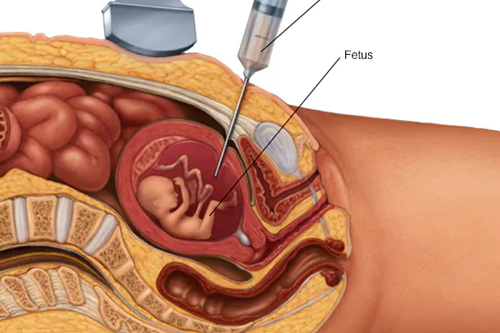
You're mentioning three different types of prenatal tests—CVS (Chorionic Villus Sampling), Amniocentesis, and Nuchal Translucency (NT) screening—that are used to check for genetic or chromosomal conditions in a developing fetus. Here's a quick breakdown of each:
When it's done : Typically between 10–13 weeks of pregnancy.
How it's done : A sample of chorionic villi (tiny finger-like projections from the placenta) is taken through the cervix (transcervical) or abdomen (transabdominal).
What it tests for : Chromosomal abnormalities (like Down syndrome, trisomy 13, trisomy 18), and some genetic disorders (like cystic fibrosis, Tay-Sachs).
Pros : Done early; results are typically available faster than amniocentesis.
Risks : Slight risk of miscarriage (~0.22% according to recent studies).
When it's done : Usually between 15–20 weeks of pregnancy.
How it's done : A needle is inserted through the abdomen to take a small sample of amniotic fluid.
What it tests for : Chromosomal abnormalities, neural tube defects (like spina bifida), and some genetic disorders.
Pros : Very accurate; can detect a broader range of issues than CVS (including open neural tube defects).
Risks : Slight risk of miscarriage (~0.1–0.3%).
When it's done : Between 11–14 weeks of pregnancy.
How it's done : An ultrasound measures the clear (translucent) space at the back of the baby's neck.
What it screens for : Risk of chromosomal abnormalities like Down syndrome (trisomy 21), trisomy 18, and heart problems.
Pros : Non-invasive; part of the first-trimester screening when combined with blood tests.
Limitations : It's a screening, not a diagnostic test—so it only gives a risk estimate.